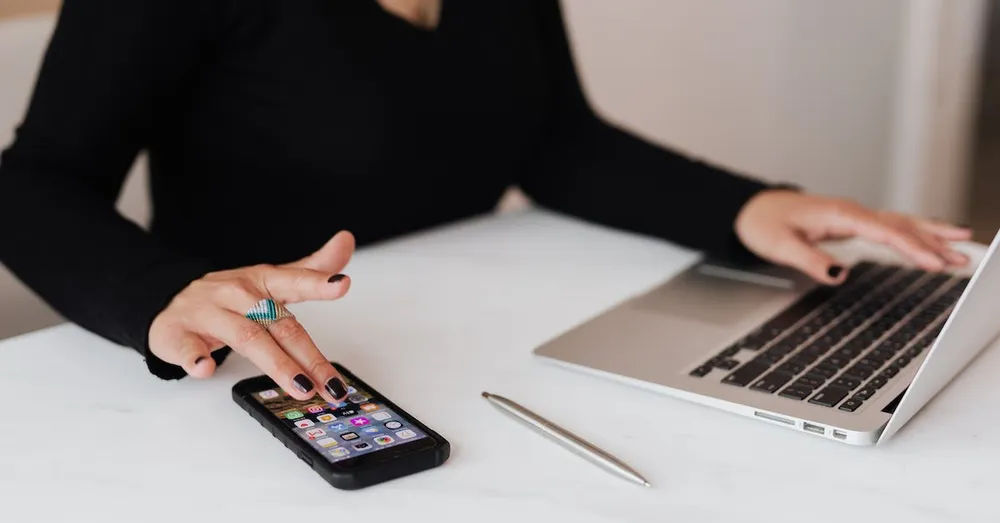
In today's digital age, it's easy to become overwhelmed and consumed by our phones. We are constantly connected, and it can be challenging to disconnect and focus on the present moment. Establishing intentional phone boundaries is essential for our mental and emotional well-being, and it can also improve our relationships with others. Here are five tips for crafting intentional phone boundaries:
- Set designated phone-free times: One of the most effective ways to establish phone boundaries is by setting designated phone-free times throughout the day. This can include phone-free times during meals, while spending time with loved ones, and before bed. By setting these boundaries, we can focus on being present in the moment and not getting distracted by our phones.
- Use apps to track and limit phone usage: There are various apps available that can help track and limit phone usage. These apps can provide insights into how much time we spend on our phones, which apps we use the most, and allow us to set usage limits for certain apps. By using these apps, we can become more aware of our phone habits and make adjustments to establish healthier phone boundaries.
- Turn off notifications for non-essential apps: Notifications can be a significant distraction, and it's easy to get caught up in responding to them. To establish phone boundaries, it's essential to turn off notifications for non-essential apps. This will help reduce distractions and allow us to focus on the task at hand.
- Establish phone-free zones: Designate certain areas in your home or office as phone-free zones. This can include the living room, bedroom, or even the bathroom. By setting these boundaries, we can ensure that we are not constantly on our phones and can focus on other activities or spend quality time with loved ones.
- Communicate your phone boundaries to loved ones: It's essential to communicate your phone boundaries to loved ones. Let them know when you will be unavailable due to phone-free times, and ask for their understanding and support. By communicating these boundaries, we can ensure that our relationships are not affected by our phone usage habits.
Crafting intentional phone boundaries is essential for our mental and emotional well-being, and it can also improve our relationships with others. By setting designated phone-free times, using apps to track and limit phone usage, turning off notifications for non-essential apps, establishing phone-free zones, and communicating our phone boundaries to loved ones, we can take control of our phone usage habits and focus on the present moment.
- Prioritize face-to-face interactions: One of the most essential phone boundaries to establish is to prioritize face-to-face interactions. Instead of relying on text messages or phone calls to communicate with loved ones and friends, try to make time for in-person conversations. This can include scheduling regular coffee dates or dinner outings with friends and family. Not only is it a great way to strengthen relationships, but it also allows us to disconnect from our phones and be present in the moment.
- Practice mindfulness: Mindfulness is the practice of being present in the moment and aware of our thoughts and emotions. When we are mindful, we are less likely to get caught up in our phone usage habits. To establish phone boundaries, try incorporating mindfulness practices into your daily routine. This can include meditation, yoga, or simply taking a few minutes each day to focus on your breath and be present in the moment.
- Be mindful of social media usage: Social media can be a significant distraction and a major contributor to phone addiction. To establish phone boundaries, try to be mindful of your social media usage. This can include limiting the amount of time you spend on social media, unfollowing accounts that make you feel negative or stressed, and being selective about the content you consume.
- Take regular phone breaks: Phone breaks are a great way to establish phone boundaries. Try to take regular breaks throughout the day where you disconnect from your phone and focus on other activities. This can include going for a walk, reading a book, or simply spending time with loved ones. By taking regular phone breaks, we can reduce our phone usage habits and focus on other activities.
- Remember that boundaries are fluid: It's important to remember that phone boundaries are fluid, and they may change over time. It's important to regularly evaluate our phone usage habits and make adjustments as needed. By being mindful of our phone usage and making adjustments as needed, we can establish healthy phone boundaries that work for us.
In conclusion, crafting intentional phone boundaries is essential for our mental and emotional well-being and can also improve our relationships with others. By setting designated phone-free times, using apps to track and limit phone usage, turning off notifications for non-essential apps, establishing phone-free zones, communicating our phone boundaries to loved ones, prioritizing face-to-face interactions, practicing mindfulness, being mindful of social media usage, taking regular phone breaks and remembering that boundaries are fluid, we can take control of our phone usage habits and focus on the present moment.
Комментарии
Отправить комментарий